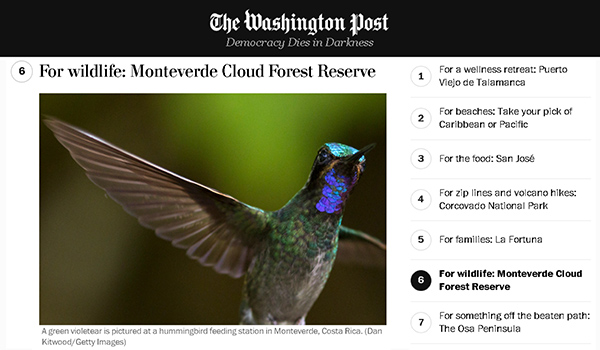Coati Crossing | All About Our Neighbor, the Pizote
-1.jpeg)
Costa Rica’s Coatis: Playful Residents of the Wild
When exploring Costa Rica’s lush forests, you might be lucky enough to encounter a group of lively, long-tailed animals that seem to be as curious about you as you are about them. Meet the coati, one of Costa Rica’s most charming and intelligent creatures.
Known for their playful demeanor and sociable nature, coatis are a delight to observe in their natural habitat. Whether scampering through the undergrowth or climbing trees with ease, these fascinating animals add a unique charm to Costa Rica’s already vibrant biodiversity.
What Are Coatis?
Coatis, also known as coatimundis, or pizotes, are members of the raccoon family (Procyonidae) and are easily recognizable by their elongated snouts, bushy tails , and sharp claws. The most common species in Costa Rica is the white-nosed coati (Nasua narica), which is named for its distinctive white markings. These medium-sized mammals typically weigh between 6 and 18 pounds and measure about two feet long, not including their impressive tails.
Habitat and Range
White-nosed coatis are incredibly adaptable and can be found across a variety of habitats, from lowland forests to mountainous cloud forests. They are particularly prevalent in Costa Rica’s national parks and reserves, including Monteverde’s world-famous cloud forests.
Coatis thrive in these environments thanks to their omnivorous diet and ability to navigate forest floors and treetops. According to the San Diego Zoo Wildlife Alliance, their sharp claws and flexible ankles make them excellent climbers, which helps them forage for food and avoid predators.
Thanks to Costarica.org for this wonderful graphic showing where you can find coatis.
Social Butterflies of the Forest
One of the defining traits of coatis is their social structure. Female coatis and their young live in groups called bands, which can include up to 30 individuals. These bands work together to forage for food and protect each other from potential threats.
Males, on the other hand, are more solitary, typically leaving bands when reaching adulthood, but returning during the mating season. This and other complicated social dynamics within bands are a fascinating aspect of coati behavior, and this cooperative nature is key to their survival.
A Day in the Life of a Coati
.jpeg?width=811&height=486&name=Coati%20Crossing%20All%20About%20Our%20Neighbor%2c%20the%20Pizote%20(1).jpeg)
Coatis are diurnal, meaning they are active during the day, unlike their raccoon relatives. Their days are spent foraging for a wide variety of food, including fruits, insects, small vertebrates, and eggs. Their long snouts and flexible noses are perfectly adapted for digging in the soil or sniffing out food hidden underground or deep in the brush.
Due to these foraging habits, Coatis play an important ecological role by controlling pests, dispersing seeds, and pollinating flowers. They eat the fruit and leave seeds scattered throughout the forests as they travel, contributing to the health and regeneration of their forest habitats.
Coatis in the Monteverde Cloud Forest
The Monteverde Cloud Forest is a particularly special place to observe coatis. The unique conditions of the cloud forest, such as high humidity and dense vegetation, provide an abundance of food and shelter for these animals.
A study from the Cloudbridge Nature Reserve highlights how coatis’ behavior and activity patterns differ depending on elevation, shedding light on their adaptability in cloud forests. In Monteverde’s higher altitudes, coatis are often seen exploring trails or darting across open spaces, which is why they’re so frequently spotted in Monteverde’s reserves.
.jpeg?width=850&height=509&name=Coati%20Crossing%20All%20About%20Our%20Neighbor%2c%20the%20Pizote%20(7).jpeg)
Fascinating Behaviors
Coatis are not just adorable—they’re also incredibly resourceful. They use their sharp claws to tear apart logs and unearth insects, and their keen sense of smell helps them locate food with precision. Interestingly, coatis are known to “wash” their food by dipping it in water before eating, a behavior they share with raccoons. Additionally, their tails, often held upright like a flag, are thought to help band members keep track of each other in dense vegetation.
Toño Pizote and Forest Fires
The pizote/coati is not just an endearing symbol of Costa Rica’s wildlife—it plays a vital role in the ecosystem as an early warning system for forest fires. Known for their sharp senses and vocal nature, coatis let out loud yelps and alarm calls when they detect danger, including the approach of fire in dry forested areas. These vocalizations can alert other animals and even humans to the presence of smoke or flames, allowing time for evacuation or intervention.
In Costa Rica, this unique trait inspired the creation of Toño Pizote, the country's version of Smokey the Bear. Toño Pizote serves as a mascot for fire prevention campaigns, reminding residents and visitors alike of the importance of protecting the country's precious forests. By embodying the alertness and community-oriented behavior of coatis, Toño Pizote helps spread awareness about the devastating impact of forest fires and the need for vigilance, particularly during the dry season. This connection between the pizote and fire prevention underscores Costa Rica’s deep respect for its wildlife and innovative approach to environmental conservation.
.jpeg?width=811&height=486&name=Coati%20Crossing%20All%20About%20Our%20Neighbor%2c%20the%20Pizote%20(4).jpeg)
Conservation and Coexistence
While coatis are not currently considered endangered, habitat loss and fragmentation pose potential threats to their populations. Protecting the forests they call home is crucial to ensuring their survival. Costa Rica’s extensive system of national parks and reserves, including Monteverde, plays a vital role in providing safe habitats for coatis and countless other species.
Spotting Coatis in Costa Rica
Visitors to Costa Rica’s national parks often encounter coatis near picnic areas or trails. Check out this video about coatis for a closer look at their charming behavior, where their bold and curious nature sometimes leads them to approach humans. However, it’s important to remember that feeding wildlife can disrupt their natural behaviors and diets. The best way to appreciate coatis is by observing them from a respectful distance on a hike through the trails of their natural habitat, where you can pause, observe them, and then let them go about their daily routines.
.jpeg?width=824&height=494&name=Coati%20Crossing%20All%20About%20Our%20Neighbor%2c%20the%20Pizote%20(3).jpeg)
Visit a Coati’s Paradise in Monteverde
Coatis embody the spirit of Costa Rica—playful, resilient, and deeply connected to their environment. Their presence adds a touch of magic to any visit to the country’s forests. Whether you’re watching a band of coatis forage together or catching a glimpse of a solitary male climbing a tree, these captivating creatures offer an unforgettable glimpse into the wonders of Costa Rica’s wildlife.
Click here to explore one of Monteverde’s lush reserves and keep an eye out for these delightful animals. Coatis are more than just a charming sight—they’re an integral part of the ecosystems that make Costa Rica one of the most biodiverse places on Earth.


.jpeg?width=911&height=546&name=Coati%20Crossing%20All%20About%20Our%20Neighbor%2c%20the%20Pizote%20(2).jpeg)


.jpg)
